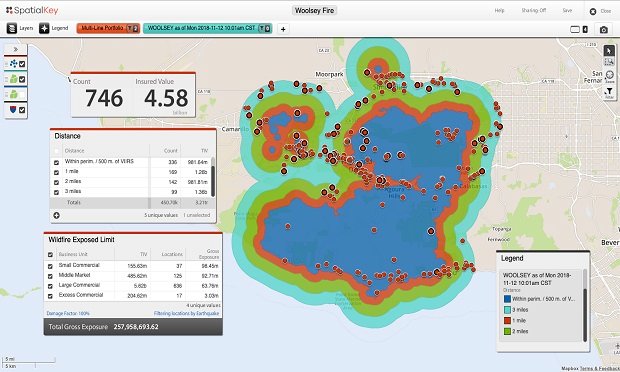The word prediction brings up a lot of negative connotations. Weoften laugh at predictions made about who will win an election or aSuper Bowl, but insurers aren't laughing at the predictions theyare able to make about customer behavior that allows them to drawup models that limit exposure to risks.
|In a recent report from Towers Watson ("Predictive ModelingProving Its Worth Among P&C Carriers"), Brian Stoll, directorand co-author of the report for Towers Watson, explains the valueinsurers have gained.
|Stoll reports 70 percent of insurance carrier respondents usepredictive modeling for personal auto and Stoll feels that figureunderstates the market share of carriers using predictivemodeling.
|"We didn't weigh by market share," he says. "If you start withthe top 10 carriers, they all model and have been for years. If youlook at this from a market share standpoint you probably have 95percent doing [predictive modeling] and the rest are planning onit."
|Those not doing any predictive modeling for personal linesautomobile are likely mutual companies operating in one or twostates, explains Stoll.
|"It's tough to get around not modeling in big states," he says."You might be able to get away with it in smaller states."
|The terms predictive modeling and predictive analytics sometimesget thrown around interchangeably and Stoll isn't sure there ismuch of a difference.
|"Predictive analytics is probably broader in that modelingimplies some formal mathematical treatment, where predictiveanalytics can be a series of metrics and measures that help youmake better decisions," he says. "Whether you call it predictiveanalytics or predictive modeling, you are getting at the samething. They both shoot for the same goal but approach it indifferent ways. Personally, I would say predictive modeling is asubset of predictive analytics, but I'm sure you'd get many moredefinitions. The terms are becoming interchangeable."
|From Credit to Telematics
|Stoll believes predictive modeling got its start in the personalauto line with the use of credit checks, a variable that had neverbeen used before.
|"It was not directly relevant to personal auto, but it is a goodproxy for responsibility and responsibility matters," says Stoll."[Carriers] brought in statisticians and began looking atinteractions of variables that historically had been treated one ata time. They started looking at other external and internalvariables. It all combined to make predictive modeling what it ispre-telematics."
|Telematics is the game changer for predictive modeling, though,according to Stoll. Carriers moved from some meaningful proxies toactual information about the driver, how they drive, when theydrive, and how much torque is in the vehicle.
|"That information replaces a lot of proxies that createdcontroversies from a regulatory standpoint and some discomfort,"says Stoll. "It enables better pricing because you have [driving]information on the drivers."
|The private view of a driver makes it difficult for anothercarrier to take that customer away without assuming the originalcompany has correct information and the competition is going tomatch the first price.
|"The potential is huge," says Stoll. "The logistics are not easyso it's taking a while for companies to get their arms around it.The big national companies are already there in different ways,shapes, and forms. Progressive is well ahead of everybody else. Itis definitely coming and coming fast."
|Commercial Lines Next
|It's easy for a carrier to use a GPS device in a privateautomobile to capture all the information and produce scores on thedriver's driving habits. For commercial fleet operators, the valueis different. The devices not only manage driver behavior, but passon data about driver logistics and fuel efficiency.
|"Good drivers save 10 percent of fuel compared to drivers thatbrake quickly or accelerate quickly," points out Stoll. "That canbe a huge number for a fleet."
|The telematics applications for insurance carriers with personalauto are maturing slower than in the commercial lines because theneeds of the personal lines insurers are broader and needs to beintegrated more efficiently to make effective use of the data,according to Stoll.
|For commercial lines, the rating plans are class based. Carriersare not always thrilled with their exposure bases or class plans,according to Stoll.
|"[Carriers] recognize there are big gaps between the ability ofthose tools to effectively manage exposure at the individual risklevel and translate it to effective pricing," he says."Historically, they have given underwriters more discretion forthat individual risk. Stability of operations, and stability ofownership are relevant and a lot of internal data is relevant, too,starting with interaction of variables carriers already have inhouse. Throw in the next layer—loss control and premium auditbecause the diversity of claims is greater than with personalauto—and all that information is relevant."
|Stoll points out that with personal auto there are many vehiclesand each exposure is small, so the traditional methods of actuarialcredibility work well. For commercial lines it's much tougher.
|"If you move to the extremes where you are writing $10 millionlimits the game changes from expected loss to frequency avoidance,"says Stoll. "If you can avoid even one loss through predictivemodeling you can save $10 million. That's a pretty good investmentto make."
|Carriers have to determine if they are going to make betterdecisions with this information or without it? Stoll claims he hasyet to see an insurance line where there wasn't some significantlift from modeling.
|
Want to continue reading?
Become a Free PropertyCasualty360 Digital Reader
Your access to unlimited PropertyCasualty360 content isn’t changing.
Once you are an ALM digital member, you’ll receive:
- All PropertyCasualty360.com news coverage, best practices, and in-depth analysis.
- Educational webcasts, resources from industry leaders, and informative newsletters.
- Other award-winning websites including BenefitsPRO.com and ThinkAdvisor.com.
Already have an account? Sign In
© 2024 ALM Global, LLC, All Rights Reserved. Request academic re-use from www.copyright.com. All other uses, submit a request to [email protected]. For more information visit Asset & Logo Licensing.








